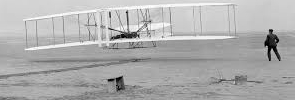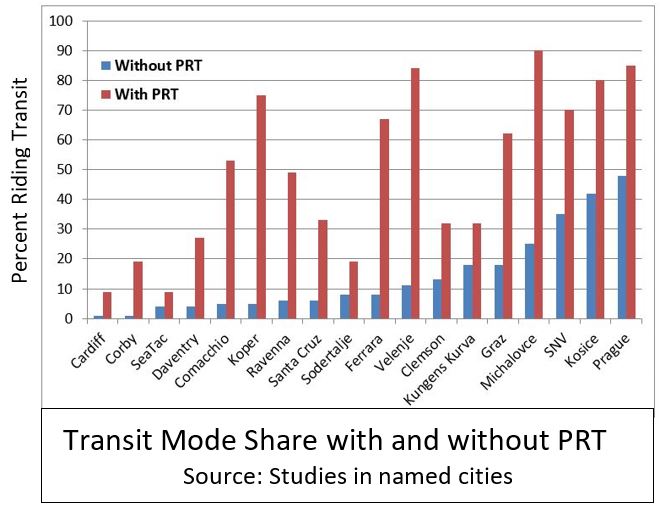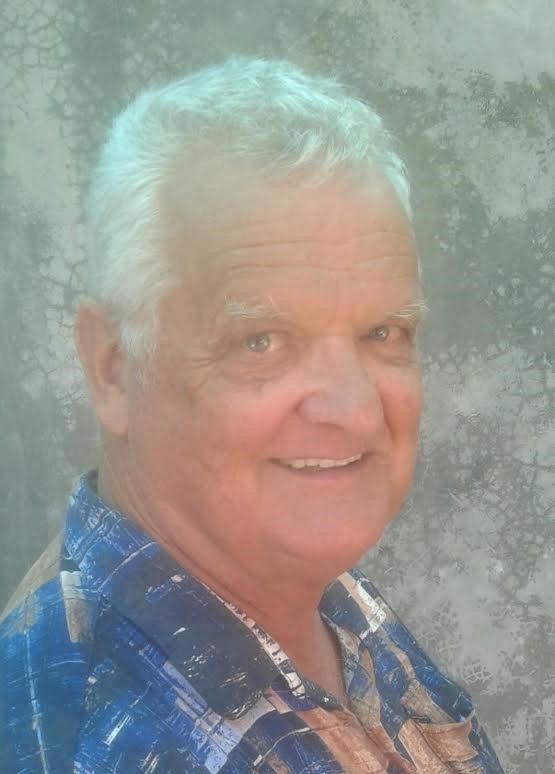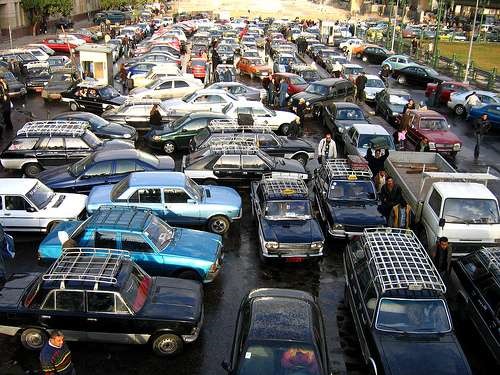
by J. Edward Anderson, PhD, P.E.
Please click link below for full article:

by J. Edward Anderson, PhD, P.E.
Please click link below for full article:

Please see link below for full article:
A SMALL INVESTMENT COULD GO A LONG WAY TOWARDS MITIGATING CLIMATE CHANGE AND CONGESTION


by
Robert Johnson
A key benefit of automated transit is its ability to reduce auto Vehicle Miles Traveled (VMT) and parking requirements. Many of these same benefits can be achieved by using robots operating on sidewalks to deliver small items, thus eliminating person trips to and from stores and restaurants by any mode. In the case of items that are already being ordered online and delivered, sidewalk robots can reduce local truck traffic. In some cases, automated transit and sidewalk delivery robots will serve the same geographical area, and a comprehensive planning model will benefit from taking both into account.
With the exception of the Rivium ParkShuttle, which allows pedestrians and autos to cross its dedicated roadway at grade in certain locations, automated transit systems currently require human on-board supervision or an exclusive guideway. Delivery robots, on the other hand, are now making hundreds of deliveries every day on public sidewalks with no human supervisor nearby.
In addition to small sidewalk robots that travel 4-6 mph (6-10 kph), larger robot delivery vehicles that operate on roadways are also being developed. While these show promise, they are currently not autonomous and require either an on-board supervisor or a chase car when operated on public roads. Only sidewalk robots will be considered below.
CURRENT STATE OF SIDEWALK ROBOT INDUSTRY
A number of companies are now developing sidewalk robots, and big names include Amazon, FedEx, and PostMates. The current leader in the field in terms of actual systems deployed is a smaller company named Starship Technologies (www.starship.xyz ) which is currently operating hundreds of robots in the US and UK with no accompanying human attendants.

Over 30 Starship robots are operating at the Fairfax, VA campus of George Mason University (GMU) just outside of Washington, DC. The robots can be remotely controlled by human operators when necessary but are mostly autonomous. In addition to operating on sidewalks, they can cross streets at marked crosswalks. Similar fleets of Starship robots are operating at Northern Arizona University, Purdue University in Indiana, and in the town of Milton Keynes in the UK.
The Starship robots use cameras and ultrasonic sensors to determine their immediate environment, and radar to assist the cameras in detecting oncoming cars when crossing a street. Robots from some competing companies also use lidar. While Starship robots have GPS, their primary method of localization is to match prominent straight lines currently visible with corresponding lines in photos taken earlier of the same area. This gives the robot’s location to within 2 inches (5 cm).
The Starship robot and most of its competitors operate only outdoors. This simplifies operations since the robots don’t have to go through doorways, nor are there concerns about losing GPS signals and communications links while indoors.
In the US, where Starship robots operate mostly on university campuses, the deliveries are generally snacks or fully prepared meals. In Milton Keynes, deliveries are to individual residences and also include groceries and small packages. The delivery surcharge is currently $2 in the US and one British Pound in the UK. In a typical US campus system, a restaurant or convenience store employee places the delivery into one of the robots waiting just outside their establishment. The robot then travels to a location on campus specified by the consumer at the time the order was placed, and he or she is notified by text message to meet the robot. The consumer then uses their phone to unlock the robot’s lid so they can access the delivered items.
PLANNING CONSIDERATIONS
The primary requirement for a system of sidewalk delivery robots is, of course, a suitable network of sidewalks that are wide enough to allow robots to easily pass oncoming pedestrians. Since the Starship robot is about 22.4 inches (57 cm) wide, this implies a minimum sidewalk width of about five feet. Competing robots have similar widths. The robots at GMU generally travel on sidewalks at least eight feet (245 cm) wide.
The CBDs of many older cities have narrow, congested sidewalks that put robots at a disadvantage compared with alternative delivery modes, such as bicycle couriers. In newer Major Activity Centers and in many suburbs the sidewalks have adequate width and are less congested, thus facilitating robot operation.
In addition to a suitable network of sidewalks, a practical robot delivery system needs a high enough density of potential customers to make it economically viable. Too low a density would require excessive trip lengths which would reduce the number of customers per day each robot could serve. This is why most of the systems deployed so far have been on large university campuses where tens of thousands of students, faculty, and staff can be served by robots with a typical trip length of less than 0.75 mile (1.2 km).
Many of the same moderately dense urban areas that look promising for automated, at-grade shuttles such as the EasyMile EZ10 and Local Motors Olli, also work well for sidewalk delivery robots. Unlike shuttles which still operate in test mode with attendants, delivery robots are now fully operational in multiple locations. By the time automated shuttles are deployed in significant numbers, it can be expected that sidewalk robots will be commonplace. Since delivery by robot is sometimes an alternative to a person trip on a shuttle, transportation models will ideally take both modes into account.

ATRA members get a big discount and new members get a year’s free membership in addition!
Please see link for details to tickets and information :

by J. Edward Anderson, first ATRA President.
2003 – The Twenty-Eighth Year.
Please click on link below for Year 28 history.
The History of the Advanced Transit Association Year 28 (2003)


by J. Edward Anderson, first ATRA President.
2002 – The Twenty Seventh Year.
Please click on link below for Year 27 history.
The History of the Advanced Transit Association Year 27 (2002)


by John Foley
Let’s you and me go for a ride…
We have a standing weekly appointment at the Melbourne Sports and Aquatic
Centre. A few minutes before we are due to meet, I walk across the road to the station
in the foyer of the Economics Building of the University of Melbourne.
On the wall are four computers. I wave my smart phone over a hot spot and
touch the computer screen to select the St.Vincent’s Hospital where you work. As I
step into the first pod car, I sit down, wave my smart phone over another hot spot, the
computer reads where I want to go, the door closes and my car smoothly moves off at
5km/h. Once clear of the foyer, it accelerates to 60km/h and enters the main stream of
traffic.
Two minutes later it approaches St. Vincent’s Hospital and switches to a side
track that takes it inside the foyer, again at 5km/h.
You have been delayed so I step out to wait for you. There is no crowd here
because most passengers just turn up, step into a waiting pod car and ride away.
Sometimes when there is a rush, they might have to wait a minute or two. When you
are free you take the lift downstairs and walk across the foyer to the station.
There are now three pod cars in the St. Vincent’s Hospital station, and a woman
in a wheelchair is getting into the first one.
A young mother with and a five-year-old boy and a baby in a pram is entering
the second one.
I swipe my smart phone at the wall computer again and touch the logo for the
Melbourne Sports and Aquatic Centre. We walk to the third pod car, take a seat and I
swipe my smart phone over the hot spot. You don’t need a ticket as the fare is the
same as a taxi, per vehicle, not per passenger, so I will pay this trip for both of us.
We silently glide forward at 5km/h until we leave the foyer where the pod car
smoothly accelerates to 60km/h and seamlessly joins the main stream of traffic.
Travelling at a kilometre a minute, we chat quietly as the computer guides our
pod car along the most efficient route, avoiding areas of heavy traffic and any parts of
the guideway under repair, above all the roads, cars, traffic lights, railways and tram
lines. As the grid is extended over time, more motorists will choose to be passengers
on the system so the car traffic will decrease leaving the roads to buses, taxis and
delivery trucks as well as trade vehicles such as plumbers, electricians and so on.
As we near the Melbourne Sports and Aquatic Center our pod car diverts from
the main track, enters the building and slows down again to 5km/h. It stops behind
another parked pod car and we walk six paces to the front desk. At 60km/h, the trip
from St. Vincent’s Hospital to Albert Park has taken us four minutes.
For two hours we indulge ourselves with all the facilities and after showering
and enjoying a refreshing soft drink, we walk to the station in the foyer and bid each
other farewell.
You use your smart phone to program the computer to get you to Ringwood.
You enter the first pod car, swipe your smart phone over the hot spot and the pod car
moves off. It is 24 kilometers to Ringwood so the computer guides your pod car to
the high speed track giving you six minutes to glance at your newspaper or listen to
your choice of music, radio or comedy channel before the pod car stops 40 metres
from your home.
I have a meeting so I use my smart phone to go to the city. My pod car follows
a few metres behind yours until it turns left and heads for Collins Street which is
three minutes away.
Our meeting goes well and finishes at 8:30pm. Four of us decide to go for a
meal in Lygon Street. There is a pod car station in the foyer of our building so we all
crowd into one vehicle. The maximum weight that a pod car can carry is 300kg so an
automated voice tells us that we are overloaded by 68kg. Two of us get into the
second pod car and follow our friends for the two minute journey to Carlton.
Well after midnight and with a splendid Italian meal and a fair bit of wine on
board, we are all too drunk to drive a car but that is not a concern. There are no
random breath tests on pod cars and they run 24 hours a day. Walking 30m to the
station, we say goodnight to each other and get into four separate pod cars.
As I silently glide off, I notice two young women getting into the pod car
behind me. No looking for a taxi, no annoying driver, no breathaliser and no leering
pests on the train to hassle them. It is nearly 2am but even at this hour they can enjoy
safe, private transportation from Carlton to their home.
I live at Pascoe Vale, eight kilometers away, so I settle back, switch off the
music and bask in the silence for the two minute journey.

By John Foley
by J. Edward Anderson, first ATRA President.
2001 – The Twenty Sixth Year.
Please click on link below for Year 26 history.
The History of the Advanced Transit Association Year 26 (2001)
